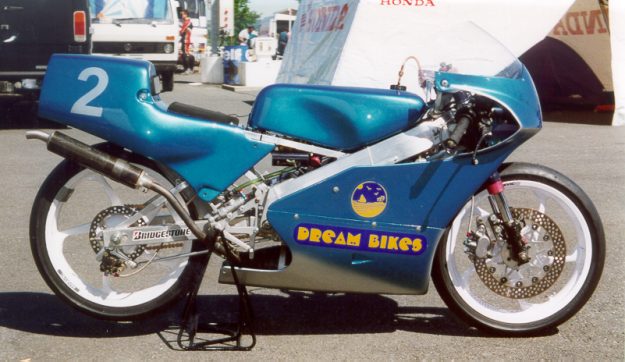
Back to home page
Back to motorcycling main
page

My RS125R-92 in its new colors blue-green metallized with the numbers and designs in a metallized grey ...
The first operation you should do when you receive your brand new machine is to dismount and measure everything ...
These bikes are sent in a configuration that lets them use
standard petrols (commercial super gazoline).
Though, the power is low and you cannot fight even in a national
championship. You need to improve the power.
Honda publishes a pamphlet giving some indications (courses are
also given in some important countries) that lets you improve
both the engine and the frame.
For the 92' model, Honda showed two main tune-ups: standard Avgaz and racing Avgaz.
The standard Avgaz can be found on smal airports for the airplanes that use piston engines. It's a petrol sligthly more expensive than classical super gazoline but it's not very good for racing purposes because it does contain a lot of anti-freeze additives and is intended for engines that run regularly at low rpms, very far from a pushed 2-stroke engine ! I use it (mixed with 40% of super) for trainings after having slowed down the engine, of course.
The racing Avgaz is developped specifically for the motorcycle
racing. Several makers do it and Elf, for example, furnishes also
the special oil for Honda that should be used with (HTX976).
It contains additives that prevent the mixture to explode and
lets you use high compression ratios while maintaining the octane
ratio allowed by the FIM rules. This petrol burns very quick
which lets you have high rpms and an ignition timing not to much
advanced.
In the world championship, they can use better petrols because they don't have the same rules as the other FIM championships on this point ...
Before 93, several other petrols were available with different octane ratios and the richer (it's the proper word !) were up to 124 octanes !
From 98', unleaded petrol will be obligatory: the engines will suffer ...
Here are some indications for the RS125R-92 as it comes out of the box.
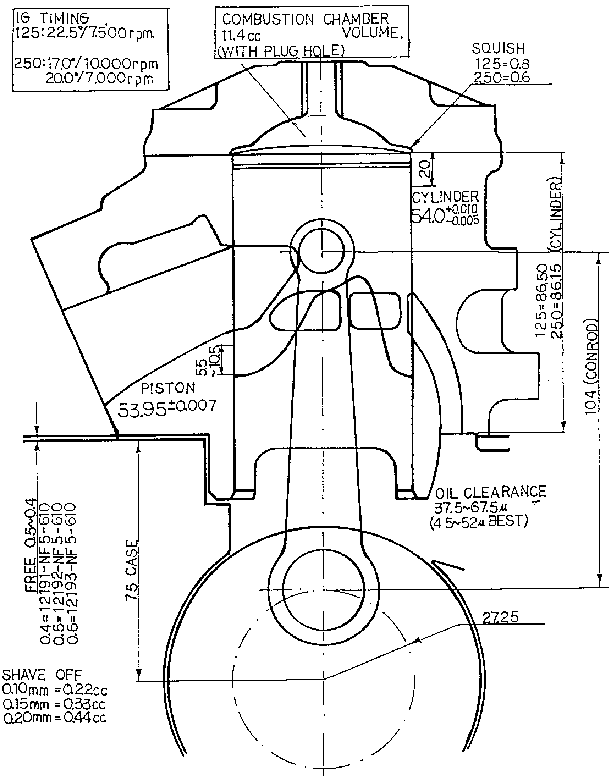
Influence of the ignition timing over the engine power curve. Warning, don't play with this to much, it's the better way to destroy an engine ...

Here is an operation you must do when you re-plate your cylinder. The small bar in the middle of the exhaust port is heated a lot and it expands in the cylinder with a seizure risk, you should grind it according:
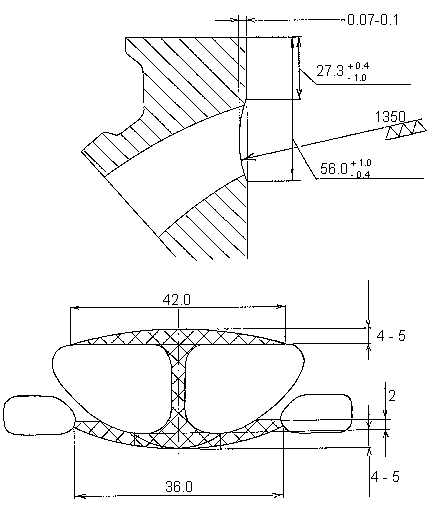
Two important points on the exhaust you should NOT modify:
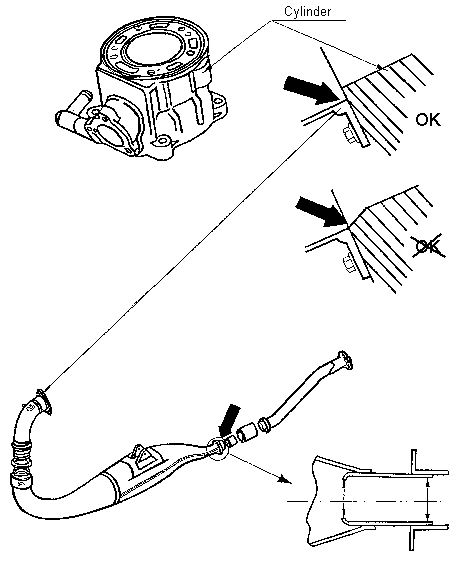
This basic tune-up needs a petrol with at least 102 octanes.
Tune-up details:
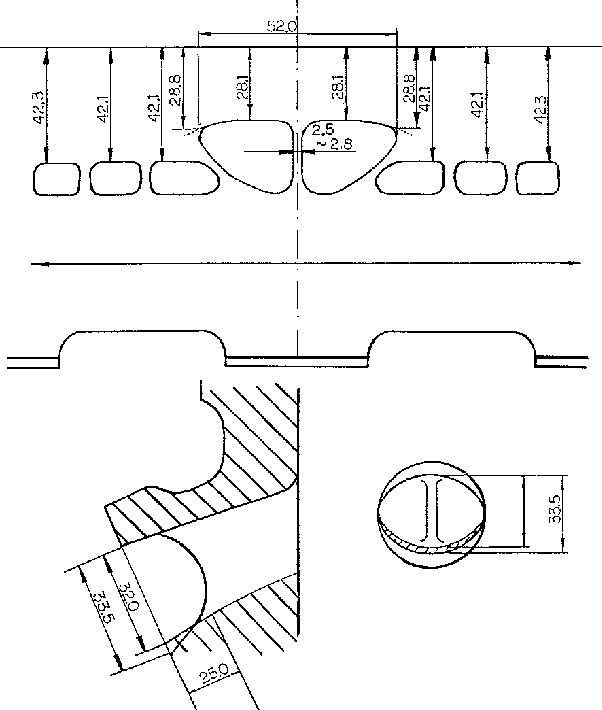
This basic tune-up needs a petrol with at least 110 octanes.
Tune-up details:

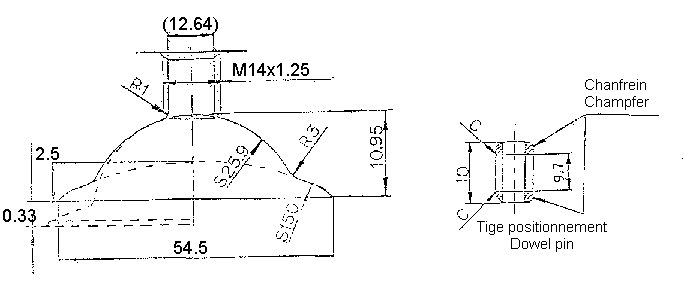

I'm used to take the "footprint" of the ports on my cylinders, here is the standard one:
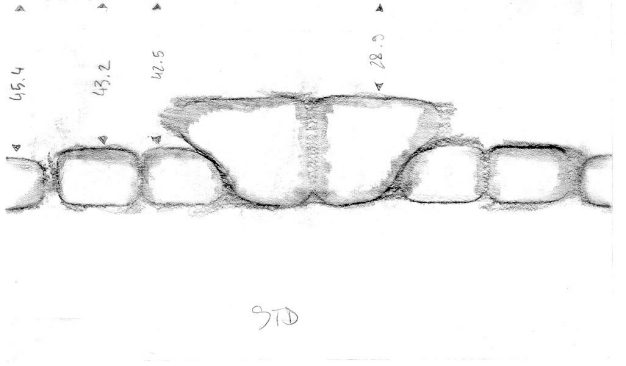
And those of my tuned-up one:

Some other mods:

An extremely important point on the RS125 is the attachement
of the engine on the frame. The engine has no secondary shaft to
equilibrate the mainshaft, this gives heavy vibrations the Honda
engineers could master only by mounting the engine on
silent-blocs (it's better for your balls !).
If the front silent-blocs are worn, the engine will move a lot in
the frame and force the exhaust to break ...
These silent-blocs should be replaced frequently (at least twice
a season), the rear nylon tubes could be changed less often.
Before mounting them, I inject silicone in the new silent-blocs:
they last more.
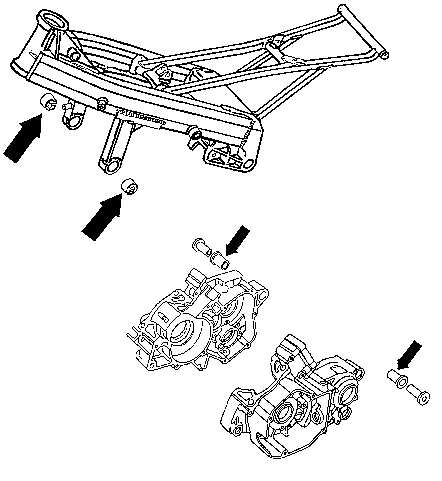
Here are a few mods I did on my bike: